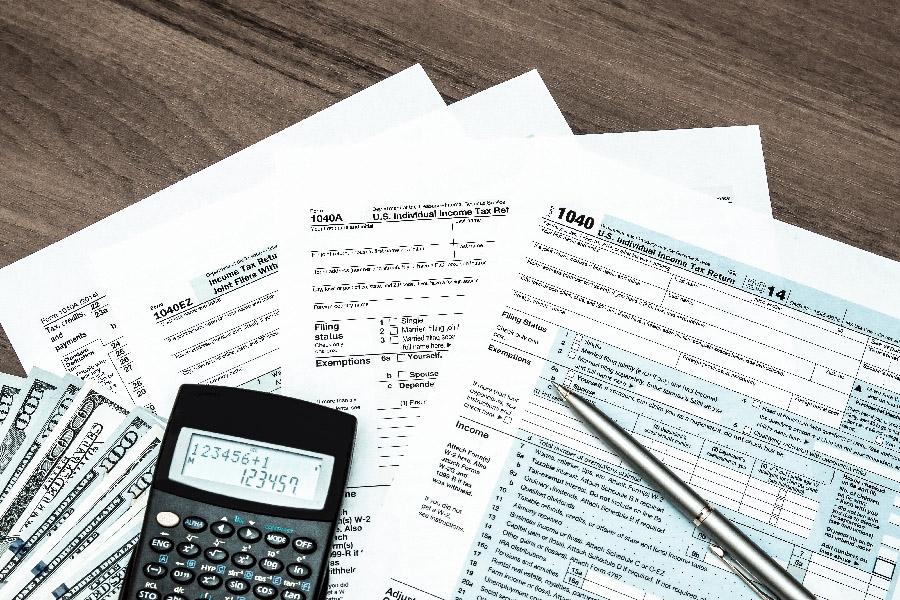We crunch the numbers behing the multi-billion dollar tax industry.
Tax forms are complicated: the lines, the boxes, the math. Yet most adults in the U.S. were never taught how to file a tax form in school. The recently passed tax reform bill, Tax Cuts and Jobs Act, may cause extra confusion to people who filed taxes for 2018. Indeed, the complexity of the tax code is why businesses that prepare taxes for individuals and corporations is a multi-billion dollar industry.
Here are some of the numbers behind the general level of tax knowledge, and the types of mistakes people make:
A March 2018 H&R Block online survey of 1,000 millennials nationwide analyzed how much young adults know about filing taxes.
The main findings:
52%
had no idea how the new tax bill would affect them personally;
62%
didn’t know how much of their paycheck goes towards taxes;
78%
are unaware of how ‘life events,’ including getting married, having a child, buying and selling a home, affect how to file taxes, despite nearly 72% millennials having experienced at least one life event in the past year.
The Oregon Department of Revenue and IRS don’t track the number of people who make mistakes filing their taxes. The IRS does send out millions of letters a year indicating the return was flagged for some reason, spokesperson Raphael Tulino says. But errors account for only a portion of those letters. He declined to comment on how much schooling a person needed to fill out a tax form correctly.
ODR spokesperson Joy Krawczyk said in an email about 10% of Oregon tax returns require extra review, but not all of those are flagged because of mistakes. It’s difficult to specify the level of education required to fill out a personal income tax form, Krawczyk said. Although interview style software or an actual interview with a tax preparer can make the process easier to navigate, “both still require taxpayers to have a general awareness of the tax implications of their personal finances and provide the correct information on all their financial activities.” (About 90% of all federal returns and 87 percent of state returns are filed electronically.)
In 2017, the state received 2.1 million returns.
Common tax filing mistakes:
- Selecting the wrong filing status
A taxpayer’s filing status can affect which credits and deductions they’re eligible for, the value of their standard deduction and their tax bracket. One situation that can make choosing a filing status difficult is when more than one filing status seems to fit. For example, if a taxpayer with children is getting a divorce, they may not be sure if they should file as married filing jointly or married filing separately or, in some instances, whether they qualify to file as head of household.
- Missed credits and deductions
Education credits. Depending on the kind of academic program, what year the student is in, income and other restrictions, a student may use the American Opportunity Credit of up to $2,500 or the Lifetime Learning Credit of up to $2,000. Taxpayers who paid tuition and fees in
2017 may be able to deduct up to $4,000 and those who paid student loan interest may be able to deduct up to $2,500.
Source: Nathan Rigney, lead tax research analyst at the Tax Institute at H&R Block
Tax education for low-income residents:
Filing taxes can be a daunting task for low-income residents who often do not have access to the internet to file taxes online or the financial resources to turn to commercial tax preparers.
Common mistakes for low-income people filing taxes:
- Reporting requirements for obtaining health coverage under the Affordable Care Act marketplace. People have to fill out extra forms to claim health premium tax credits.
- Low earners often think they do not have to file taxes because they earned little. In 2017, the threshold for single people under 65 filing taxes was at least $10,400 gross annual income.
- Tax reform. Changes to the tax code are expected cause confusion. Changes include the suspension of all personal and dependent exemptions and the increase of the child tax credit to $2,000 from $1,000 per child.
- One in five eligible Oregon tax filers miss out on the earned income tax credit (EITC), according to Sarah Adams, executive director of CASH Oregon, a nonprofit that provides low-income families and individuals free tax preparation services and outreach. The EITC can be valued up to 30% of a resident’s annual income. “It really can have a positive impact on families,” says Adams.
- Even if an eligible person does not owe taxes, they can still get the EITC. In Oregon, 265,000 eligible workers claimed the EITC in 2017, receiving $564 million. The average amount of EITC received by Oregon residents was $2,130 in 2017, according to the IRS.




